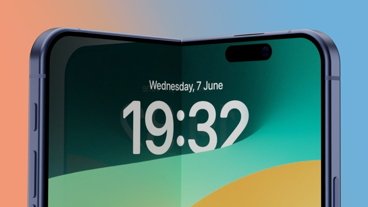AMD has detailed the next generation of Radeon graphics processing units codenamed "Navi 2X," with the RDNA 2 family anticipated to include hardware ray tracing among other new capabilities in cards that should be compatible with macOS.
AMD is currently offering graphics cards like the RX 5000 series that use its 7-nanometer Navi GPUs, along with more exotic professional-level cards like the Radeon Pro Vega II for the Mac Pro and the Radeon Pro W5700. In a presentation as part of AMD's recent Financial Analyst Day, the company has big plans for the next generation of cards and GPUs.
The second generation of RDNA cards bear the codename "Navi 2X," reports Anandtech, with the name following on from the current generation of GPUs using the codename Navi. Aimed at the high-performance segment, the lineup will enable "uncompromising 4K gaming" according to a slide, while still providing "efficient power" usage.
AMD did not provide detailed information about the GPUs, aside from its headline features. As the GPUs are to be used in the Xbox Series X, Microsoft's updated game console, the details AMD provides are more a confirmation of what to expect in the GPUs and graphics cards.
The features list for the GPUs include hardware ray tracing capabilities, as well as variable-rate shading, bringing AMD more in line with offerings from main rival Nvidia. AMD intends to continue using a 7-nanometer process, just like RDNA.
In terms of power usage, AMD is aiming for a 50% increase in performance-per-watt from RDNA to RDNA 2, with RDNA itself achieving 50% improvements. The improvements will be fueled by changes to the microarchitecture to boost the performance per clock, a reduction in complexity and switching power for logic, and an overall increase in clock speed.
While cards are a long way from being launched, professional Mac users and those with a need for high-level graphics processing performance will be keeping a close eye on AMD's Radeon launches. As Apple continues to deny Nvidia graphics cards compatibility within macOS while adding support for Radeon graphics cards, this leaves AMD as the only real graphical upgrade path for Mac Pro owners, and those using external GPU enclosures.
 Malcolm Owen
Malcolm Owen







-m.jpg)






 Christine McKee
Christine McKee
 Charles Martin
Charles Martin
 Mike Wuerthele
Mike Wuerthele
 Marko Zivkovic
Marko Zivkovic



 William Gallagher
William Gallagher
-m.jpg)






5 Comments
GPUs are still one of the largest unanswered questions regarding ARM Macs.
If Apple decides to go with their own GPU, apps written for Metal will probably "just work," but I haven't seen many signs that adoption is particularly good. Although OpenGL is deprecated, it will probably be around for years, and even if OpenGL drivers exist for Apple GPUs (I'm skeptical) that certainly wouldn't be a drop-in replacement.
AMD GPUs on top of Apple ARM chips, though, also sounds like a big lift…lotta questions here and I haven't heard anyone even speculate yet.
All the more reason an affordable Mac with swappable GPU would sell extremely well. Even if they were modules that were (actually) available for purchase from Apple. eGPU helps a lot, but with dGPU built in it makes little to no sense purchasing RX580-based machines in 2020.
Can't wait for raytracing in the finder, most likely one of the few apps to make use of it. /s
Hmm... posit: dedicated ray tracing hardware will be in iPhones before Macs ship with AMD GPUs with ray tracing.
Why would I posit this? Apple has AR eyeglass hardware coming out. If there was a use case where properly rendered lighting and shadows on virtual objects would be really great, it would be AR, wouldn't it?
If the AR glasses or goggles are coming in 2021, shipping 2020 iPhones with ray tracing hardware in the SoC creates a significant market for the AR hardware to sell into.
Apple GPU, on a stick, in a 5K Pro Display, with/without an ARM SoC please.